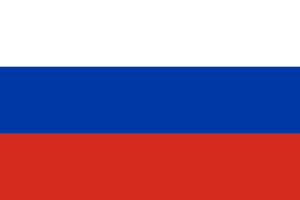Language/Russian/Grammar/Dative-Case
As we continue our journey into Russian grammar, we have now arrived at the Dative Case. This case is used to indicate the indirect object of a sentence, which can include people or things receiving an action, as well as things to which something refers. In this lesson, we will explore the basics of the Dative Case and how to use it correctly.
Take a moment to explore these relevant pages as you conclude this lesson: Prepositional Case & Genitive Case.
What is the Dative Case?
The Dative Case is used to indicate the indirect object of a sentence, which can include people or things that are indirectly affected by the action of the verb. The ending of the noun changes depending on its gender, and the ending of adjectives modify accordingly, similarly to previous cases we have discussed before. For example:
- Я дал моей жене цветы - I gave flowers to my wife.
- Мне нужен карандаш - I need a pencil.
In the first example, the noun "жене" (wife) is in the Dative case, as it indicates the person to whom the action (giving flowers) was directed to. In the second example, the pronoun "мне" (to me) is used in the Dative case to indicate the person that needs the pencil.
Dative Case Endings
Like all previous cases, correct usage of the Dative requires proper form identification of the noun. Below we have a table which demonstrates the different noun endings as well as the changes in the ending of adjectives that agree with them.
| Gender | Ending | Adjective ending |
|---|---|---|
| Masculine | -у/-ю | -ому/-ему |
| Feminine | -e/-и | -ой/-ей |
| Neuter | -у/-ю | -ому/-ему |
| Plural | -ам/-ям | -ым/-им |
Examples
Here are a few examples to further demonstrate the use of the Dative Case:
- Я говорю со своим другом - I am talking to my friend.
- Она помогает старикам - She is helping old people.
- Ребенок показывает мне картинку - The child is showing me a picture.
Tips
When using the Dative Case, it's important to keep in mind that in Russian, direct and indirect objects are different from what they are in English. For example, the English sentence "I gave the flowers" would be translated in Russian as "Я дал цветы", without "to" or "my wife". Keeping this subtle difference in mind can help avoid confusion.
It's also important to note that the use of prepositions can change the case of the noun and how it is used in the sentence. For example, "Я говорю со своим другом" uses the preposition "со" to indicate that both the person speaking and the other person are talking to each other. The use of the preposition changes the function of "друг" to an instrumentative and requires the noun to be in the Dative case. Paying attention to subtle nuances like this can greatly aid in effective communication in Russian.
Exercises
- Change the following sentence to a dative case: Я хочу купить эту книгу (I want to buy this book).
- Translate the following sentence into Russian: She is bringing me tea.
- Conjugate the following verb into the Dative case: Показать (to show)
Sources
- The Dative Case - Russian Grammar
- The Dative Case in Russian: Usage and Examples
- The Accusative Case - Russian Grammar
Videos
Dative Case Noun Endings in Russian - YouTube
Beginning Russian: Dative Case. Indirect Object. Common Verbs -1 ...
Russian Grammar Lessons: DATIVE CASE - YouTube
Other Lessons
- Кое То Нибудь
- Adjectives
- 0 to A1 Course
- Prepositional Case
- Порядок слов в русском предложении
- Use of the verb быть in the past
- Pronouns
- Instrumental Case
- Russian cases
- Past Tense Conjugations

